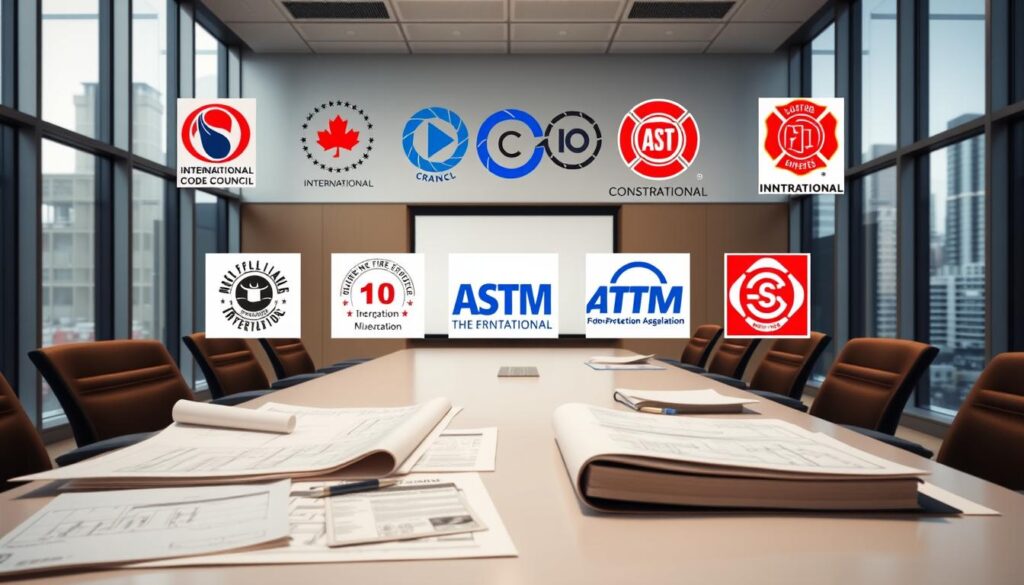The United States has taken a significant step towards ensuring digital literacy across the country, with technology standards playing a crucial role.
According to recent data, the state’s technology standards ensure that students, teachers, and librarians gain and apply critical 21st Century digital knowledge and skills.
This comprehensive guide will cover the development, implementation, and impact of technology standards in the USA, providing insights into their importance in various industries.
Key Takeaways
- Understanding the role of technology standards in ensuring digital literacy.
- Overview of the development and implementation of technology standards.
- Impact of technology standards on various industries in the USA.
- Importance of compliance with technology standards.
- Future prospects for technology standards in the USA.
Understanding Technology Standards: An Overview
In the rapidly evolving tech landscape, understanding technology standards is crucial for innovation. These standards are not just guidelines; they are the foundation upon which modern technology is built, ensuring that different systems can work together seamlessly.
What Are Technology Standards?
Technology standards are specifications that ensure products, services, and systems are safe, reliable, and interoperable. They are developed through a collaborative process involving industry experts, government agencies, and other stakeholders. For instance, the International Society for Technology in Education (ISTE) provides standards that guide the use of technology in education, enhancing learning experiences.
Importance of Standards in Technology
The importance of technology standards lies in their ability to facilitate interoperability, safety, and efficiency. By having common standards, businesses can ensure that their products and services can work with those of other companies, reducing compatibility issues and enhancing customer satisfaction. Moreover, standards play a critical role in ensuring safety and reducing risks associated with new technologies.
For example, understanding building codes is essential for ensuring that buildings are constructed with safety and efficiency in mind. These codes are a form of technology standard that dictates the minimum requirements for building design, construction, and materials.
How Standards Affect Innovation
Technology standards have a profound impact on innovation. By providing a clear framework, standards enable companies to focus on developing new technologies rather than figuring out how different components will work together. This not only accelerates the development process but also ensures that new technologies are compatible with existing systems.
Furthermore, standards can drive innovation by encouraging the development of new technologies that meet specific criteria, such as energy efficiency or cybersecurity. As a result, standards play a pivotal role in shaping the future of technological advancements.
Key Organizations Involved in Standards Development

The development of technology standards in the USA involves several key organizations that play a crucial role in shaping the country’s construction standards and building codes. These organizations work together to ensure that technology standards are consistent, reliable, and meet the needs of various industries.
American National Standards Institute (ANSI)
ANSI is a private, non-profit organization that coordinates the development of American National Standards. It plays a vital role in the development of technology standards, particularly in areas related to USA building codes and construction practices. ANSI works closely with industry stakeholders to identify needs and develop standards that enhance product quality, safety, and interoperability.
- ANSI oversees the creation of standards through a consensus-based process, ensuring broad acceptance and adoption.
- It accredits standards developers and provides a framework for conformity assessment programs.
- ANSI’s work in construction standards in America helps to promote efficiency and reduce costs.
Institute of Electrical and Electronics Engineers (IEEE)
The IEEE is a leading developer of industry standards in a broad range of technologies, including electrical, electronics, computer engineering, and technology. Its standards play a crucial role in shaping the technology landscape, including areas related to telecommunications, energy, and information technology.
Some key contributions of IEEE include:
- Developing standards for wireless communication technologies.
- Establishing guidelines for the development of smart grid technologies.
- Creating standards for cybersecurity and data protection.
International Organization for Standardization (ISO)
ISO is an independent, non-governmental international organization that develops and publishes international standards for various industries. While not exclusively focused on the USA, ISO’s standards have a significant impact on American businesses and industries, particularly in areas related to quality management, environmental management, and product safety.
ISO’s work is crucial for:
- Facilitating international trade by providing a common framework for quality and safety.
- Enhancing product quality and reducing the risk of defects.
- Promoting best practices in areas such as environmental management and energy efficiency.
The collaboration between these organizations is essential for developing comprehensive and effective technology standards. By working together, they help to ensure that standards are consistent, reliable, and meet the evolving needs of industries in the USA.
The Process of Developing Technology Standards
Technology standards development is a systematic approach that involves several key stages, from initial proposal to final implementation. This process is crucial for ensuring that technology products and services are safe, efficient, and interoperable.
Initial Proposal and Development
The journey of creating a technology standard begins with an initial proposal. This proposal is typically submitted by industry experts, researchers, or government agencies who identify the need for a new standard or the revision of an existing one. The proposal outlines the scope, objectives, and potential impact of the proposed standard.
Key stakeholders are then engaged in the development process. These stakeholders include industry representatives, consumer groups, and regulatory bodies. Their input is invaluable in shaping the standard to meet the needs of all parties involved.
Public Review and Consensus Building
Once the initial draft of the standard is prepared, it is opened for public review. This stage is critical as it allows a broader audience to provide feedback on the draft standard. The public review process ensures that the standard is scrutinized from various perspectives, enhancing its quality and acceptability.
Consensus building is a fundamental aspect of standards development. It involves negotiating and reconciling different viewpoints to arrive at a standard that is acceptable to all stakeholders. This process can be iterative, with multiple rounds of revisions based on feedback received.
Final Approval and Implementation
After achieving consensus, the standard is put forward for final approval. This step involves a formal vote by the relevant standards organization. Upon approval, the standard is published and made available for implementation.
The implementation of technology standards is facilitated through various channels, including industry guidelines, training programs, and compliance mechanisms. Effective implementation ensures that the benefits of the standard, such as improved safety and interoperability, are realized in practice.
| Stage | Description | Key Activities |
|---|---|---|
| Initial Proposal | Identifying the need for a new or revised standard | Proposal submission, stakeholder engagement |
| Public Review | Draft standard review by a broader audience | Feedback collection, revisions |
| Consensus Building | Negotiating different viewpoints | Stakeholder negotiations, draft revisions |
| Final Approval | Formal approval of the standard | Standards organization vote |
| Implementation | Putting the standard into practice | Guidelines development, training, compliance checks |
By following this structured process, technology standards can be developed that meet the needs of both industry and consumers, promoting innovation and safety in the technology sector.
Types of Technology Standards

Understanding the different types of technology standards is essential for businesses and organizations to comply with regulatory requirements and industry best practices. Technology standards can be categorized based on their application, enforceability, and the industries they serve.
Voluntary vs. Mandatory Standards
Technology standards can be either voluntary or mandatory. Voluntary standards are guidelines that organizations can choose to follow to enhance their products, services, or processes. These standards are often developed by industry consensus and can provide a competitive edge. On the other hand, mandatory standards are enforced by regulatory bodies and must be complied with to avoid legal repercussions. For instance, American building codes are mandatory standards that ensure safety and structural integrity in construction projects.
Quality Standards and Best Practices
Quality standards define the requirements for products, services, or processes to ensure they meet certain criteria for quality, reliability, and performance. These standards help organizations improve their operations and customer satisfaction. Best practices, often codified in standards, provide guidelines on how to achieve superior performance. In the construction industry, adhering to quality standards can lead to better project outcomes and reduced risks.
Safety Standards and Compliance
Safety standards are designed to protect people, equipment, and the environment from harm. These standards are critical in industries such as construction, where adherence to safety protocols can prevent accidents and ensure compliance with regulatory requirements. Compliance with safety standards not only reduces the risk of legal penalties but also enhances an organization’s reputation and trust among its stakeholders.
In conclusion, understanding and implementing the appropriate types of technology standards is crucial for organizations operating in the United States. By distinguishing between voluntary and mandatory standards, and adhering to quality and safety standards, businesses can ensure compliance, enhance their operations, and contribute to the overall safety and efficiency of their respective industries.
Building Effective Technology Standards
Crafting effective technology standards requires a multifaceted approach that balances various stakeholder needs. Effective technology standards are crucial for ensuring that technological innovations are both safe and efficient.
Engaging Stakeholders in the Process
Engaging stakeholders is a critical step in developing technology standards. This includes involving industry experts, consumers, and regulatory bodies to ensure that the standards are comprehensive and meet the needs of all parties involved.
- Industry experts provide insights into the latest technological advancements.
- Consumers help in understanding the practical implications of the standards.
- Regulatory bodies ensure that the standards comply with existing laws and regulations.
For instance, the ISTE Standards for Educators have been shown to lead to significant learning gains, demonstrating the importance of stakeholder engagement in standards development.
Balancing Flexibility and Rigor
Technology standards must strike a balance between being flexible enough to accommodate future innovations and being rigorous enough to ensure current safety and efficacy.
- Flexibility allows standards to adapt to new technologies.
- Rigor ensures that the standards maintain their integrity and purpose.
Achieving this balance is crucial for the long-term success of technology standards. It requires continuous monitoring of technological advancements and periodic updates to the standards.
Incorporating Emerging Technologies
Incorporating emerging technologies into standards is essential for keeping pace with innovation. This involves:
- Monitoring technological trends.
- Assessing the potential impact of new technologies on existing standards.
- Updating standards to include new technologies where appropriate.
By doing so, technology standards can remain relevant and effective in guiding the development and implementation of new technologies.
Challenges in Creating Technology Standards

As technology continues to evolve, the process of creating standards to govern it becomes increasingly complicated. The development of technology standards in the USA is a multifaceted challenge that involves keeping pace with rapid technological advancements, ensuring global compatibility, and addressing diverse industry needs.
Rapid Technological Advancements
The rapid pace of technological change poses a significant challenge to creating and maintaining relevant technology standards. Standards must be regularly updated to reflect new technologies and innovations. For instance, the LRPT recommends revising the Technology Applications TEKS to ensure they remain appropriate over time and align with 21st-century skills.
Ensuring Global Compatibility
Ensuring that technology standards are compatible globally is crucial for facilitating international trade and cooperation. However, different countries have varying regulatory frameworks, making it challenging to achieve universal compatibility. Standards organizations must work closely with international bodies to harmonize standards.
Addressing Diverse Industry Needs
The technology sector encompasses a wide range of industries, each with its unique needs and requirements. Creating standards that cater to these diverse needs without stifling innovation is a significant challenge. It requires a deep understanding of the various sectors and their specific challenges.
| Challenge | Description | Impact |
|---|---|---|
| Rapid Technological Advancements | Standards must keep pace with new technologies. | Regular updates are necessary. |
| Global Compatibility | Achieving universal compatibility is challenging. | Facilitates international trade. |
| Diverse Industry Needs | Standards must cater to various industry requirements. | Requires a deep understanding of different sectors. |
By understanding these challenges, stakeholders can work together to create more effective technology standards that support innovation and facilitate global cooperation.
The Role of Government in Technology Standards
https://www.youtube.com/watch?v=B1TtyMXqqCo
The development of technology standards in America is a collaborative effort between government bodies and industry stakeholders. Government agencies play a crucial role in shaping these standards through regulations, oversight, and collaboration with various sectors.
Federal Regulations and Oversight
Federal regulations form the backbone of technology standards in the United States. Agencies such as the Federal Communications Commission (FCC) and the National Institute of Standards and Technology (NIST) are instrumental in developing and enforcing these standards. For instance, NIST is involved in creating guidelines for cybersecurity and data protection, which are critical in today’s digital landscape.
The FCC, on the other hand, regulates communications technologies, including wireless spectrum management and broadband infrastructure. Their regulations ensure that technology companies comply with national standards, thereby promoting interoperability and innovation.
State-Level Involvement
While federal regulations provide a broad framework, state-level involvement allows for more tailored approaches to technology standards. States like California and New York have implemented their own regulations regarding data privacy and cybersecurity, which often set precedents for national policies.
For example, the California Consumer Privacy Act (CCPA) has influenced data protection laws across the country, demonstrating how state-level initiatives can drive broader change. States also collaborate with industry stakeholders to develop technology standards that address local needs and challenges.
Collaborative Efforts with Industry
Collaboration between government agencies and industry stakeholders is essential for developing effective technology standards. This partnership ensures that standards are both rigorous and flexible, accommodating the rapidly evolving technology landscape.
Industry stakeholders, including tech companies and trade associations, work closely with government bodies to provide input on proposed regulations and standards. This collaborative process helps to identify potential issues and opportunities, leading to more balanced and effective standards.
For instance, the state’s technology standards are listed for prekindergarten students, K-12 students, teachers, and librarians, showcasing a comprehensive approach to integrating technology in education. Such initiatives highlight the importance of government-industry collaboration in developing standards that are relevant and impactful.
The Impact of Technology Standards on Businesses

The impact of technology standards on businesses cannot be overstated, as they influence everything from product quality to market access. Technology standards play a vital role in shaping the business landscape in the United States.
Enhancing Product Quality and Safety
One of the primary benefits of technology standards is the enhancement of product quality and safety. By adhering to established standards, businesses can ensure that their products meet rigorous quality and safety requirements, thereby reducing the risk of product failures and associated liabilities.
For instance, the adoption of standards for product testing and certification can significantly enhance consumer trust and loyalty. Moreover, compliance with safety standards can mitigate the risk of costly recalls and legal issues.
Facilitating Market Access and Competition
Technology standards also play a crucial role in facilitating market access and promoting competition. By establishing a common framework for products and services, standards enable businesses to compete on a level playing field, fostering innovation and reducing barriers to entry.
Furthermore, compliance with technology standards can facilitate market access by ensuring that products are compatible with existing infrastructure and meet regulatory requirements. This is particularly important for businesses looking to expand into new markets or sectors.
Driving Cost Efficiency and Innovation
In addition to enhancing product quality and facilitating market access, technology standards can drive cost efficiency and innovation. By providing a clear framework for product development and manufacturing, standards can help businesses reduce costs associated with product design, testing, and certification.
Moreover, the adoption of technology standards can drive innovation by enabling businesses to focus on developing new products and services that meet emerging market needs. For example, the development of standards for emerging technologies such as AI and IoT can help businesses navigate the complexities of these technologies and capitalize on new opportunities.
| Benefits of Technology Standards | Description | Impact on Businesses |
|---|---|---|
| Enhanced Product Quality and Safety | Adherence to established standards for product testing and certification | Reduced risk of product failures, enhanced consumer trust |
| Facilitated Market Access and Competition | Establishment of a common framework for products and services | Increased competitiveness, reduced barriers to entry |
| Cost Efficiency and Innovation | Clear framework for product development and manufacturing | Reduced costs, driven innovation |
Leveraging International Standards
As technology continues to evolve, the importance of international standards in facilitating global trade and cooperation cannot be overstated. Leveraging these standards is crucial for businesses aiming to expand their global footprint and stay competitive in an increasingly interconnected world.
Benefits of Global Standards
Global standards offer numerous benefits, including enhanced interoperability, improved product quality, and increased market access. By adopting international standards, businesses can ensure their products and services are compatible with those of other countries, thereby facilitating global trade. For instance, the ISTE Standards are used globally and have been adopted by various countries, demonstrating the widespread recognition and acceptance of international standards.
The adoption of global standards also fosters innovation by providing a common framework that allows companies to develop new technologies and products. This, in turn, drives economic growth and competitiveness. Moreover, global standards help in reducing costs associated with compliance and certification, as companies can adhere to a single set of standards rather than multiple national standards.
Harmonization with International Practices
Harmonizing national standards with international practices is essential for ensuring that products and services can be easily traded across borders. This involves aligning national standards with international norms, thereby reducing technical barriers to trade. The process of harmonization requires collaboration between national standards bodies, international organizations, and industry stakeholders.
By harmonizing standards, countries can benefit from increased trade, improved efficiency, and enhanced consumer protection. For example, the adoption of international standards in the construction industry can facilitate the use of compatible building materials and techniques across different countries, promoting global trade in this sector.
Case Studies of Successful Implementation
Several case studies demonstrate the successful implementation of international standards. For instance, companies that have adopted global standards have seen significant improvements in their supply chain efficiency and market access. These case studies highlight the practical benefits of leveraging international standards and provide valuable insights for businesses looking to expand globally.
One notable example is the widespread adoption of ISO standards, which has facilitated global trade and cooperation among businesses. By adopting these standards, companies have been able to demonstrate their commitment to quality and reliability, enhancing their reputation and competitiveness in the global market.
Future Trends in Technology Standards

With the rapid advancement of technologies like AI and automation, the need for adaptive technology standards has never been more pressing. As we look to the future, it’s clear that technology standards will play a crucial role in shaping the industries of tomorrow.
Adapting to Artificial Intelligence and Automation
The integration of Artificial Intelligence (AI) and automation into various sectors is driving the need for updated technology standards. These standards will be crucial in ensuring that AI systems are safe, reliable, and transparent. For instance, standards for AI can help in mitigating bias and ensuring that AI decision-making processes are explainable.
To better understand the impact of AI on technology standards, let’s examine the current landscape:
| Area of Impact | Current Challenges | Future Standards |
|---|---|---|
| AI Bias | Lack of diverse training data | Standards for diverse data sets |
| Automation Safety | Risk of accidents due to malfunction | Regular safety audits and compliance checks |
Sustainability and Energy Efficiency Standards
As concern for the environment continues to grow, technology standards are evolving to incorporate sustainability and energy efficiency. This includes standards for energy consumption, waste reduction, and the use of sustainable materials in technology products.
For more insights on navigating building performance standards, visit Vert Energy Group’s guide.
The Rise of Open Standards
Open standards are becoming increasingly important as they promote interoperability, innovation, and competition. By adopting open standards, organizations can ensure that their technologies are compatible with a wide range of products and services, fostering a more collaborative and innovative environment.
The shift towards open standards is expected to have a significant impact on the tech industry, enabling greater flexibility and reducing the barriers to entry for new companies.
The Importance of Compliance and Certification
Businesses in the USA must prioritize compliance with technology standards to maintain market credibility. Compliance with technology standards is crucial for ensuring product quality and safety, which in turn, fosters trust among consumers and stakeholders.
Understanding Compliance Requirements
Compliance requirements for technology standards in the USA are multifaceted, involving adherence to various regulations and standards set forth by governing bodies. These requirements are designed to ensure that products and services meet certain thresholds for quality, safety, and performance.
Key compliance requirements include:
- Adhering to USA building codes and regulations
- Meeting standards set by organizations such as ANSI and IEEE
- Ensuring product safety and performance
As noted by industry experts, “Compliance is not just about avoiding legal issues; it’s about ensuring that your products meet the highest standards of quality and safety.”
“The future of technology standards lies in their ability to adapt to emerging technologies while maintaining a focus on safety and efficacy.” –
The Certification Process Explained
The certification process involves several steps, from initial application to final certification. This process is designed to verify that products or services meet specific standards.
| Step | Description |
|---|---|
| 1. Application | Submission of application for certification |
| 2. Review | Review of application and documentation |
| 3. Testing | Product testing to ensure compliance with standards |
| 4. Certification | Issuance of certification upon successful testing |
Benefits of Certification for Businesses
Certification offers numerous benefits for businesses, including enhanced credibility, improved market access, and increased customer trust.
Some key benefits include:
- Increased market competitiveness
- Improved product quality and safety
- Enhanced customer trust and loyalty
By understanding and adhering to compliance requirements and obtaining certification, businesses in the USA can not only ensure regulatory compliance but also gain a competitive edge in the market.
Technology Standards in Special Industries

Industries such as information technology, healthcare, and telecommunications have unique technology standards that are essential for their functioning. These standards ensure interoperability, safety, and efficiency within each industry.
The development and implementation of technology standards in these special industries are crucial for their growth and innovation. For instance, in the United States, organizations like the National Institute of Standards and Technology play a significant role in developing and promoting technology standards.
Standards in Information Technology
In the information technology sector, standards are vital for ensuring compatibility and security. Standards like those developed by the Institute of Electrical and Electronics Engineers (IEEE) facilitate the development of interoperable technologies.
Some key areas where IT standards are applied include:
- Networking protocols
- Data storage and management
- Cybersecurity measures
Healthcare Technology Standards
Healthcare technology standards are critical for ensuring patient safety and data privacy. Standards in this area include those related to medical device interoperability and electronic health records (EHRs).
The importance of these standards can be seen in the following areas:
| Standard | Description | Benefit |
|---|---|---|
| HL7 | Health Level Seven International standards for interoperability | Facilitates data exchange between healthcare providers |
| DICOM | Digital Imaging and Communications in Medicine standards | Ensures compatibility of medical imaging devices |
Telecommunications and Networking Standards
Telecommunications and networking standards are essential for ensuring seamless communication and data transfer. Standards in this area are developed by organizations like the International Telecommunication Union (ITU) and the Internet Engineering Task Force (IETF).
Some key standards in telecommunications include:
- 5G network standards
- Internet Protocol (IP) standards
- Optical networking standards
In conclusion, technology standards in special industries like information technology, healthcare, and telecommunications are vital for their efficient operation and innovation. These standards ensure interoperability, safety, and efficiency, and their development and implementation are crucial for the growth of these industries.
Resources for Engaging with Technology Standards
Professionals in the construction industry must navigate a complex landscape of technology standards. Engaging with these standards is crucial for ensuring compliance, driving innovation, and maintaining competitiveness.
Online Databases and Publications
Several online resources are available for those looking to engage with technology standards. The ISTE website is a valuable resource, offering insights into the latest developments in educational technology standards. Additionally, the National Educational Technology Standards document provides comprehensive guidance on infrastructure and technology standards.
Other notable online databases include those provided by the American National Standards Institute (ANSI) and the Institute of Electrical and Electronics Engineers (IEEE). These organizations publish a wide range of standards and guidelines relevant to the construction industry, including American building codes and technology standards for the construction industry.
Workshops and Conferences
Workshops and conferences offer opportunities for professionals to learn about the latest developments in technology standards. Events organized by standards organizations, industry associations, and educational institutions can provide valuable insights and networking opportunities.
Some notable events include conferences hosted by the IEEE and ANSI, which cover a range of topics related to technology standards. These events often feature expert speakers, panel discussions, and workshops, offering a comprehensive overview of the current landscape.
Networking Opportunities in the Standards Community
Networking with other professionals is essential for staying informed about technology standards. Joining industry associations, participating in online forums, and attending conferences can help individuals connect with others who share similar interests and challenges.
By engaging with the standards community, professionals can gain a deeper understanding of the latest developments and best practices in technology standards. This can help them stay ahead of the curve and ensure compliance with relevant regulations and standards.
| Resource | Description | Relevance to Construction Industry |
|---|---|---|
| ISTE Website | Provides insights into educational technology standards | High |
| ANSI Standards | Publishes a wide range of standards and guidelines | High |
| IEEE Conferences | Features expert speakers and panel discussions on technology standards | High |
Case Studies of Successful Standards Implementation

The impact of well-implemented standards can be seen in various case studies from the technology, aerospace, and healthcare industries. These examples demonstrate how effective standards have driven innovation, improved safety, and enhanced compliance across different sectors.
Examples from the Technology Sector
In the technology sector, the adoption of standards has been crucial for interoperability and innovation. For instance, the development of USB standards has enabled seamless connectivity across devices from different manufacturers. This standardization has not only simplified the user experience but also encouraged the development of a wide range of compatible devices.
Another example is the implementation of Wi-Fi standards, which has revolutionized wireless connectivity. By adhering to these standards, manufacturers have been able to produce devices that work efficiently across different networks, enhancing global connectivity.
Lessons Learned from the Aerospace Industry
The aerospace industry has seen significant benefits from the implementation of rigorous standards. For example, the adoption of aerospace material standards has ensured the quality and reliability of components used in aircraft manufacturing. This not only enhances safety but also reduces maintenance costs and improves overall efficiency.
The experience of the aerospace industry highlights the importance of collaborative standards development, involving stakeholders from manufacturers, regulatory bodies, and end-users. This collaborative approach ensures that standards are both practical and effective.
Impact Stories from Healthcare Standards
In healthcare, the implementation of standards has had a profound impact on patient safety and care quality. The adoption of healthcare IT standards, such as those for electronic health records (EHRs), has facilitated the secure and efficient exchange of patient information. This has improved care coordination and reduced medical errors.
Furthermore, standards for medical device interoperability have enabled the integration of various devices and systems, enhancing patient monitoring and care. These advancements underscore the critical role of standards in improving healthcare outcomes.
By examining these case studies, it becomes clear that successful standards implementation is key to driving innovation, ensuring safety, and enhancing compliance across various industries. As technology continues to evolve, the importance of effective standards will only continue to grow.
Conclusion: The Future of Technology Standards in the USA
The future of technology standards in the USA is poised for continued innovation and collaboration. As buildings consume about 40% of total U.S. energy consumption and 40% of U.S. greenhouse gas emissions, the importance of energy-efficient building codes cannot be overstated. The U.S. Department of Energy estimates that energy efficiency improvements in building codes pay for themselves in one to two years, resulting in significant energy savings for homeowners.
Innovation and Collaboration
To ensure continued innovation, it is crucial to engage stakeholders in the standards development process. The International Code Council (ICC) updates editions every three years, incorporating new technologies and practices into building codes. For instance, the 2012 International Energy Conservation Code (IECC) has been shown to close a significant portion of the gap between current building efficiency and optimal efficiency. More information on the impact of building codes can be found in a detailed analysis by the Environmental and Energy Study Institute.
Evolution of Standards
The collaborative path ahead involves regular upgrades to building codes, ensuring that new products and practices are integrated into buildings when they are no longer experimental. This evolution of technology standards will drive cost efficiency, enhance product quality and safety, and facilitate market access and competition. By leveraging international standards and best practices, the USA can continue to lead in the development of innovative technology standards.
